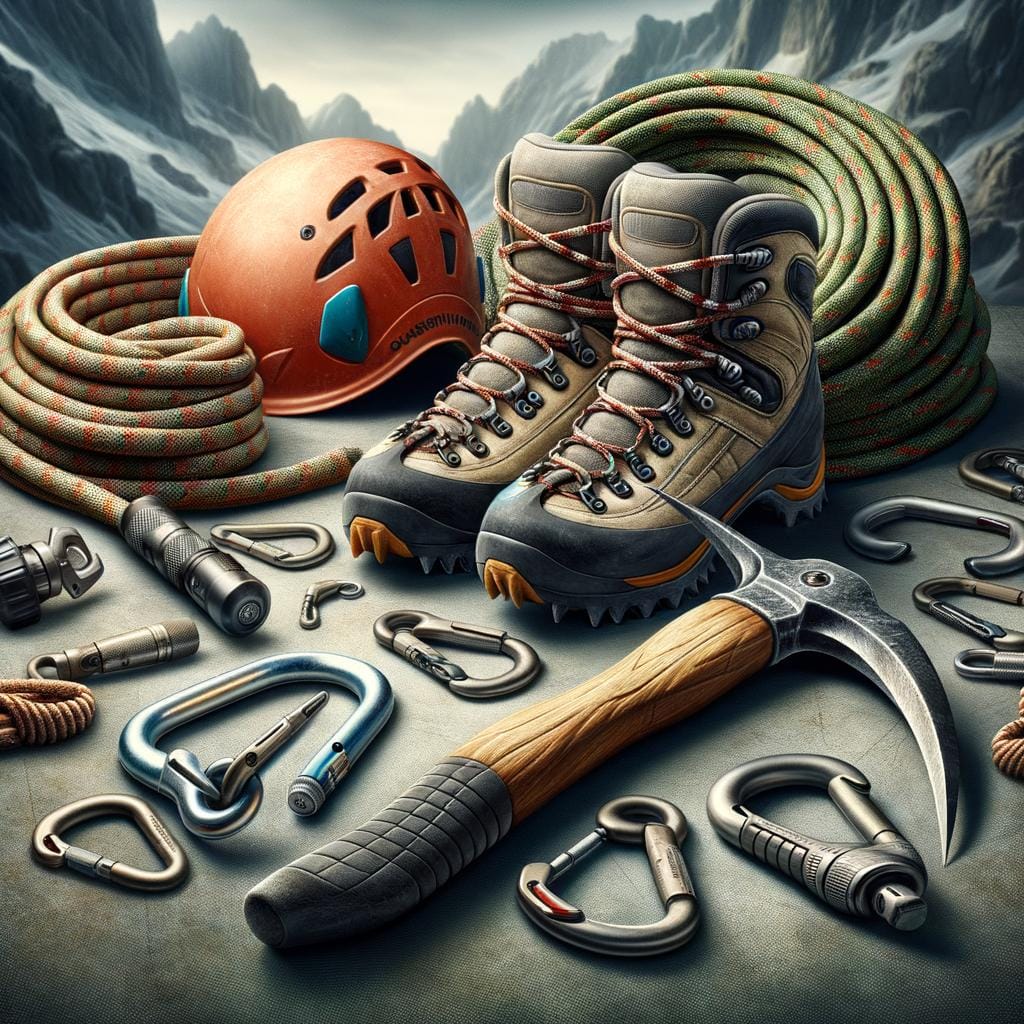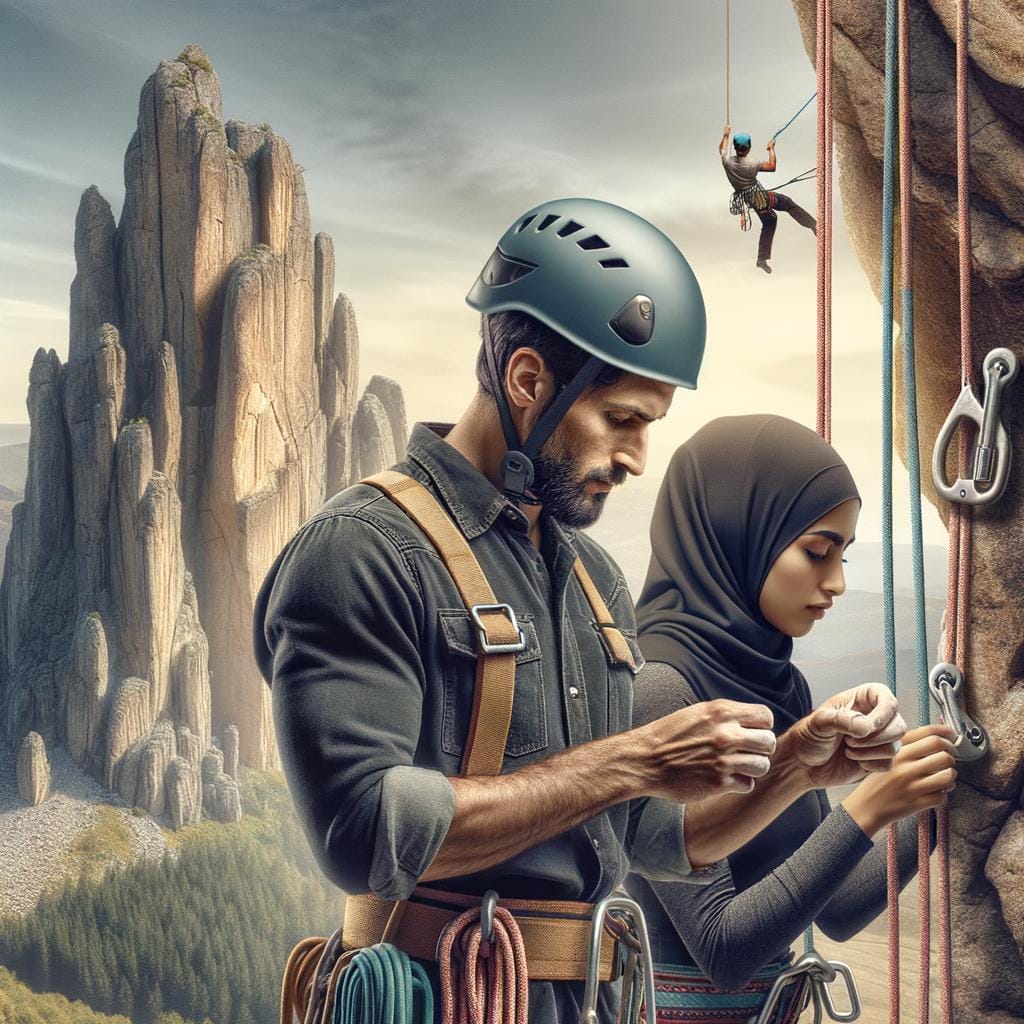Peak climbing is an exhilarating and challenging outdoor activity that attracts adventurers and thrill-seekers from around the world. It involves scaling some of the highest peaks on the planet, pushing one’s physical and mental limits to reach the summit. Whether it’s conquering a local peak or embarking on an international expedition, peak climbing offers a unique sense of achievement and fulfillment for those who dare to take on the challenge.
From the towering mountains of the Himalayas to the stunning peaks in North America, peak climbing has a rich history that dates back centuries. Many indigenous communities have revered these mountains as sacred sites, while early mountaineers paved the way for modern climbers seeking to push boundaries and conquer new heights. The significance of peak climbing goes beyond just physical conquest; it represents a deep connection with nature, personal growth, and overcoming obstacles.
To embark on a successful peak climbing journey, one must be equipped with essential gear and equipment tailored to withstand extreme conditions. From sturdy hiking boots and technical clothing to ropes, harnesses, ice axes, and crampons, each piece plays a crucial role in ensuring safety and efficiency while ascending challenging terrains.
Additionally, proper training and fitness preparation are vital components that can make or break a climber’s experience on the mountain. By honing skills such as strength conditioning, endurance training, rock climbing techniques, and altitude acclimatization, climbers can enhance their chances of reaching their peak climbing goals.
History and Significance of Peak Climbing
Peak climbing, also known as mountain climbing, has a rich history and holds great significance for many adventurers around the world. The roots of peak climbing can be traced back to the early expeditions to scale some of the highest peaks on the planet.
In the 19th century, explorers and mountaineers began pushing the boundaries of what was considered possible, conquering summits that were once thought unreachable. These pioneers laid the foundation for modern peak climbing and inspired generations of climbers to follow in their footsteps.
The history of peak climbing is filled with tales of heroism, determination, and resilience in the face of extreme challenges. From Sir Edmund Hillary and Tenzing Norgay’s historic ascent of Mount Everest in 1953 to Reinhold Messner’s solo climb of Nanga Parbat in 1970, each successful summit attempt represents a triumph of human spirit over nature’s formidable obstacles.
Peak climbing is not just about reaching the top; it is about testing one’s limits, overcoming fears, and experiencing the raw beauty and power of the mountains.
In addition to its historical significance, peak climbing also plays a vital role in promoting physical fitness, mental well-being, and a sense of achievement among enthusiasts. Climbing a peak requires strength, endurance, agility, and mental toughness. It pushes individuals out of their comfort zones and challenges them to push beyond their limits.
The experience of standing on a summit after hours or even days of strenuous effort is both exhilarating and humbling. For many climbers, peak climbing is not just a recreational activity – it is a passion that fuels their sense of adventure and self-discovery.
Essential Gear and Equipment for Peak Climbing
Peak climbing is a thrilling and challenging adventure sport that requires proper gear and equipment to ensure safety and success. Whether you are embarking on a technical climb or a high-altitude expedition, having the right gear can make all the difference. Here are some essential items that every peak climber should have in their arsenal:
- Climbing helmet: Protecting your head from falling rocks or ice is crucial during peak climbing.
- Climbing harness: A good-quality harness will provide support and security while navigating steep terrain.
- Climbing ropes: Strong and durable ropes are essential for belaying, rappelling, and securing yourself to anchors.
- Climbing shoes: Specialized climbing shoes with sticky rubber soles are vital for traction on rock surfaces.
In addition to these basic items, climbers should also carry a range of technical gear such as carabiners, cams, nuts, slings, and ice screws depending on the nature of the climb. It is important to invest in high-quality gear from reputable brands and regularly inspect and maintain your equipment to ensure it is in good working condition.
Proper clothing is also essential for peak climbing, as weather conditions can change rapidly at higher altitudes. Layered clothing that is moisture-wicking, breathable, and insulated will help keep you comfortable in varying temperatures. Additionally, don’t forget essentials such as a headlamp, first aid kit, GPS device or map and compass, sunscreen, sunglasses, and plenty of food and water to stay hydrated during your climb.
Overall, being well-prepared with the necessary gear and equipment not only enhances your performance during peak climbing but also ensures your safety in unpredictable mountain environments. By investing in quality gear and being properly equipped for your adventure, you can focus on enjoying the exhilarating experience of summiting peaks around the world.
Training and Fitness Preparation for Peak Climbing
Peak climbing requires a high level of physical fitness and endurance to successfully reach the summit of challenging peaks. To prepare for such an endeavor, proper training and physical conditioning are essential. Here are some guidelines and tips for training and fitness preparation for peak climbing:
- Cardiovascular Endurance: Peak climbers must focus on improving their cardiovascular fitness to cope with the high altitude and long hours of exertion during the climb. Activities such as running, cycling, swimming, or hiking can help build endurance.
- Strength Training: Building muscular strength is crucial for peak climbing as climbers often encounter steep terrain and have to carry heavy loads. Incorporate strength training exercises targeting the legs, core, and upper body to improve overall strength.
- Flexibility and Mobility: Flexibility is key for peak climbing to prevent injuries and improve agility on rocky or uneven terrain. Yoga or stretching exercises can enhance flexibility and mobility.
Proper training should be gradual and progressive to avoid injuries and overexertion. It is recommended to consult with a fitness trainer or experienced climber to develop a personalized training plan tailored to the specific peak climbing goal.
Ready, Set, Climb.
As the saying goes, “train hard, climb easy”. Physical preparation is vital for peak climbing as it not only enhances performance but also contributes to overall safety during the ascent. Climbers who neglect proper training may struggle with fatigue, muscle cramps, or altitude sickness, jeopardizing their expedition.
During the training phase, it’s important to simulate conditions similar to those encountered during peak climbing. This includes practicing hiking with a loaded backpack, ascending steep inclines, or even using stair-climbing machines at the gym to mimic uphill climbs.
Remember that physical fitness alone is not enough – mental preparedness is also crucial for peak climbing. Developing mental resilience and determination will help climbers push through challenging moments during the ascent towards reaching their ultimate goal – conquering that peak.
Top Peak Climbing Destinations Around the World
One of the most thrilling aspects of peak climbing is the opportunity to conquer some of the world’s most iconic and challenging summits. From the towering peaks of the Himalayas to the rugged terrain of the Andes, there are countless destinations around the globe that offer a unique and unforgettable climbing experience. Each location presents its own set of challenges and rewards, making it essential for climbers to do thorough research and preparation before embarking on their journey.
One popular peak climbing destination is Mount Everest in Nepal, which stands at an impressive 29,029 feet above sea level. Climbing Everest is no easy feat, requiring months of training, acclimatization, and extreme weather conditions.
However, reaching the summit is a dream come true for many climbers, offering unparalleled views and a sense of accomplishment like no other. Other notable peaks in the Himalayas include K2 in Pakistan and Kangchenjunga in India, both known for their technical difficulty and breathtaking scenery.
In South America, climbers flock to peaks such as Aconcagua in Argentina and Alpamayo in Peru for their challenging routes and stunning landscapes. These mountains provide a mix of high-altitude climbing, glacier traverses, and rock scrambling that test even the most experienced climbers. With proper preparation and guidance from experienced mountaineers, these destinations offer an unforgettable adventure for those willing to take on the challenge of peak climbing.
| Top Peak Climbing Destinations | Location |
|---|---|
| Mount Everest | Nepal |
| K2 | Pakistan |
| Kangchenjunga | India |
Challenges Faced During Peak Climbing
Peak climbing is an exhilarating adventure that offers a unique set of challenges to climbers. One of the main challenges faced during peak climbing is the unpredictable weather conditions. Climbers may encounter sudden changes in temperature, strong winds, heavy snowfall, or even avalanches, which can significantly impact their climb. It is crucial for climbers to be well-prepared and equipped to handle these weather challenges to ensure their safety and success on the mountain.
Another challenge that climbers often face during peak climbing is altitude sickness. As climbers ascend to higher altitudes, the air becomes thinner, making it harder for their bodies to absorb oxygen. This can lead to symptoms such as headaches, nausea, dizziness, and fatigue.
It is important for climbers to acclimatize properly by gradually ascending to higher altitudes and staying well-hydrated to reduce the risk of altitude sickness. In severe cases, climbers may need to descend quickly to lower altitudes for treatment.
Additionally, the physical demands of peak climbing can pose a significant challenge to climbers. Climbing steep terrains, carrying heavy gear, and enduring long hours of trekking can take a toll on their bodies.
Proper training and fitness preparation are essential to build strength, endurance, and stamina for peak climbing. It is important for climbers to engage in cardio exercises, strength training, hiking with a weighted pack, and practicing technical skills such as rope work and ice axe techniques to prepare themselves for the physical challenges they will face during their climb.
Safety Tips and Guidelines for Peak Climbing
Peak climbing is an exhilarating and challenging activity that attracts adventurers from all over the world. While the thrill of reaching the summit is undeniable, it is crucial to prioritize safety when embarking on such expeditions.
Safety should always be the top priority for peak climbers, as the unpredictable nature of mountain environments can pose serious risks. To ensure a successful and safe climb, it is essential to follow a set of safety tips and guidelines tailored specifically for peak climbing.
One key aspect of safety in peak climbing is proper preparation and planning. Before setting off on a climb, make sure to thoroughly research your chosen peak, including its unique challenges, weather conditions, and possible hazards. It is also important to check the current weather forecast for the area and be prepared for sudden changes in weather patterns.
Additionally, ensure that you have obtained all necessary permits and permissions required for your climb. Proper preparation will help you anticipate potential dangers and take appropriate precautions.
Another vital safety consideration for peak climbing is staying physically fit and mentally prepared for the challenges ahead. Climbing at high altitudes requires a good level of fitness and endurance, so it is important to engage in regular training leading up to your expedition. Cardiovascular exercises, strength training, and hiking with a weighted pack are all excellent ways to prepare your body for the demands of peak climbing.
Mental resilience is equally important during a climb, as you may face difficult conditions or unexpected obstacles along the way. Practicing mindfulness techniques and mental visualization can help you stay focused and calm during challenging moments on the mountain. By prioritizing safety through careful planning, physical training, and mental preparedness, you can enjoy a successful and rewarding peak climbing experience while minimizing risks.
Personal Stories and Adventures From Peak Climbers
A Life-Changing Experience
Embarking on a peak climbing adventure is not just about conquering a summit, but it’s also a journey of self-discovery and personal growth. Many climbers have shared their transformative experiences while summiting some of the world’s most challenging peaks. The physical and mental challenges faced during peak climbing push individuals beyond their limits, teaching them resilience, perseverance, and the importance of teamwork.
One climber, Sarah Adams, recounts her expedition to Mount Everest as a life-changing experience. Battling extreme weather conditions and altitude sickness, she pushed through her limits with the support of her team. Despite facing numerous obstacles along the way, reaching the summit of Everest brought an overwhelming sense of accomplishment and fulfillment. The experience not only strengthened her physically but also instilled in her a newfound appreciation for nature and the power of determination.
Connecting With Nature
Peak climbing not only tests physical endurance but also provides climbers with an opportunity to connect with the natural world in a profound way. John Davis, an avid mountaineer, describes his ascent of Aconcagua in Argentina as a spiritual journey.
Surrounded by awe-inspiring landscapes and breathtaking views, he felt humbled by the scale and beauty of nature. Climbing high into the mountains allowed him to disconnect from the hustle and bustle of daily life and reconnect with his inner self.
For many climbers, peak climbing is more than just a recreational activity; it’s a way to immerse themselves in the pristine beauty of untouched landscapes. Whether it’s scaling the rugged peaks of Denali in Alaska or navigating icy crevasses on Mont Blanc in France, each climb offers a unique experience that leaves an indelible mark on the soul.
A Community of Adventurers
Peak climbing is not just about individual achievements; it’s also about forging bonds with fellow climbers who share a passion for adventure. Through shared experiences and camaraderie on challenging expeditions, climbers form deep connections that can last a lifetime. Many climbers speak fondly of the friendships they’ve made during their peak climbing adventures, emphasizing the importance of teamwork and mutual support in achieving common goals.
The sense of belonging to a community of like-minded adventurers adds another layer of richness to the peak climbing experience. From sharing stories around campfires to providing encouragement during tough climbs, these relationships are often cherished as much as reaching the summit itself. The bond forged through shared challenges creates memories that are treasured long after the descent back to basecamp.
Conclusion
Peak climbing is not just a physical challenge but also a mental and emotional journey that tests one’s limits and pushes boundaries. As climbers face various obstacles, both natural and within themselves, the feeling of reaching the summit is unparalleled. The sense of accomplishment and euphoria that comes with conquering a peak is what drives climbers to seek out new challenges and set higher goals.
The thrill of peak climbing lies in the unpredictable nature of the mountains, the changing weather conditions, the technical difficulties, and the inner strength required to persevere through it all. It is an adventure that demands respect for nature, determination, and resilience. This unique combination of physical exertion and mental fortitude creates an experience like no other.
While peak climbing presents its share of risks and challenges, it also offers immense rewards. The breathtaking views from the summit, the camaraderie built among fellow climbers, the personal growth achieved through overcoming obstacles – these are just some of the invaluable treasures that await those who dare to venture into the world of peak climbing.
So pack your gear, train hard, stay safe, and embark on a journey that will not only test your limits but also reward you in ways you never thought possible. The peaks are calling – will you answer?

An avid outdoor enthusiast, writer, and environmental advocate who has spent over two decades exploring the world’s most breathtaking landscapes. With a background in environmental science and a passion for adventure, Frances combines her love for nature with her talent for storytelling to inspire others to embark on their own outdoor journeys.





